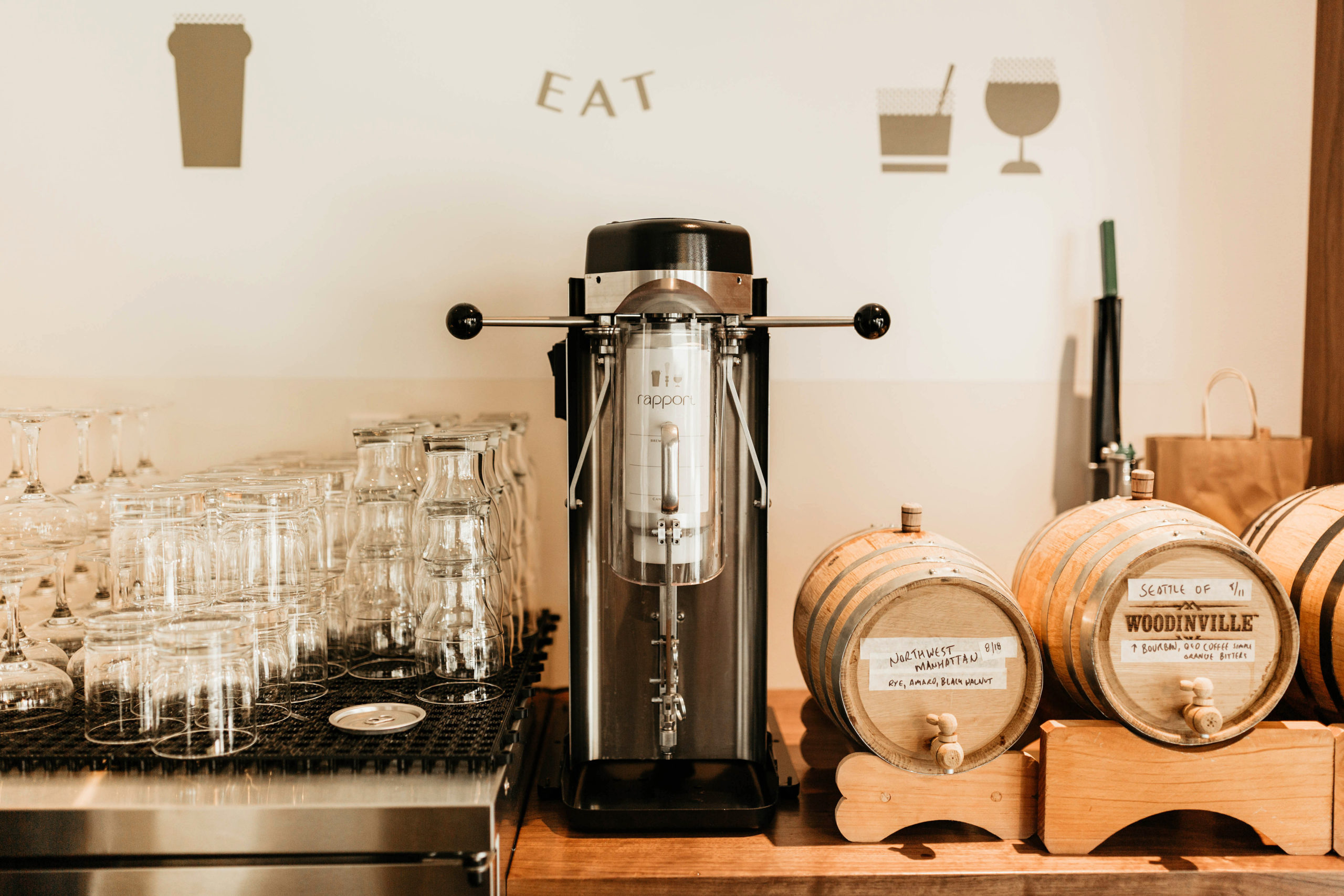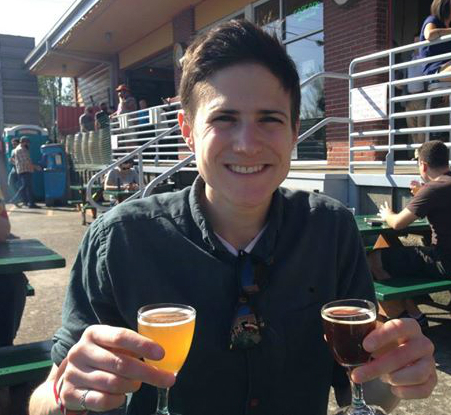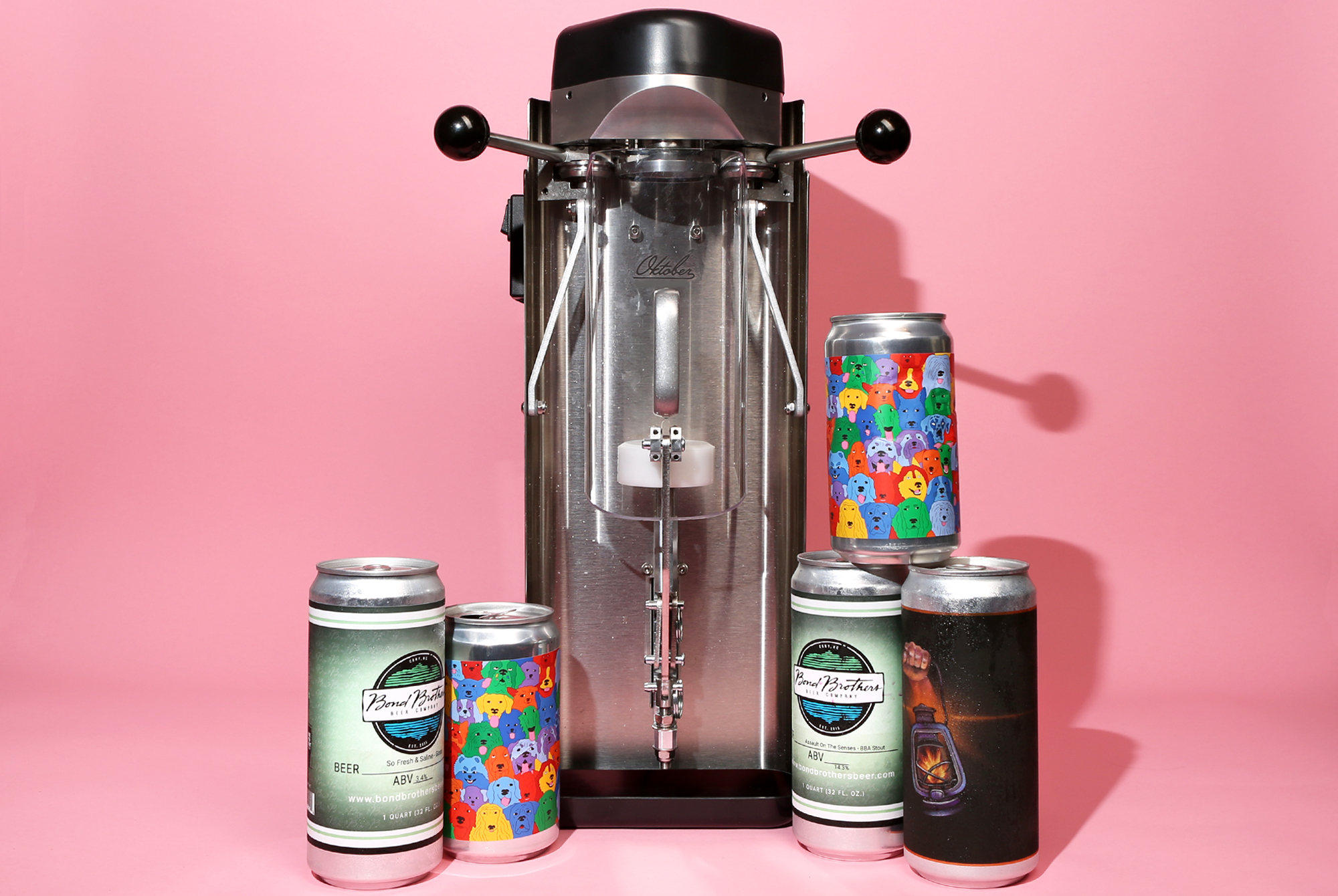Shop
How Oktober Can Seamers Has Helped Craft Breweries Survive and Thrive
All it takes is a can seamer.
Almost exactly one year ago the entire craft brewing industry literally changed overnight.
Last spring the COVID-19 pandemic hit the United States, initiating statewide lockdowns and forcing taprooms and breweries to close to the public. Immediately keg and draft sales dropped significantly, leaving many breweries scrambling to either increase their packaging production or turn to canning for the first time in order to keep generating revenue.
Breweries needed to adopt new strategies. And, they needed to adopt them quickly.
As the COVID coaster twisted and turned, breweries upgraded delivery programs, instituted direct-to-consumer (DTC) shipping solutions, started new ecommerce platforms, and increased packaging production.
Amidst the chaos and turmoil, one particular packaging company emerged with a unique solution that had penetrating effects across the country, influencing both large breweries like Founders all the way down to smaller taprooms such as Speciation Artisan Ales.
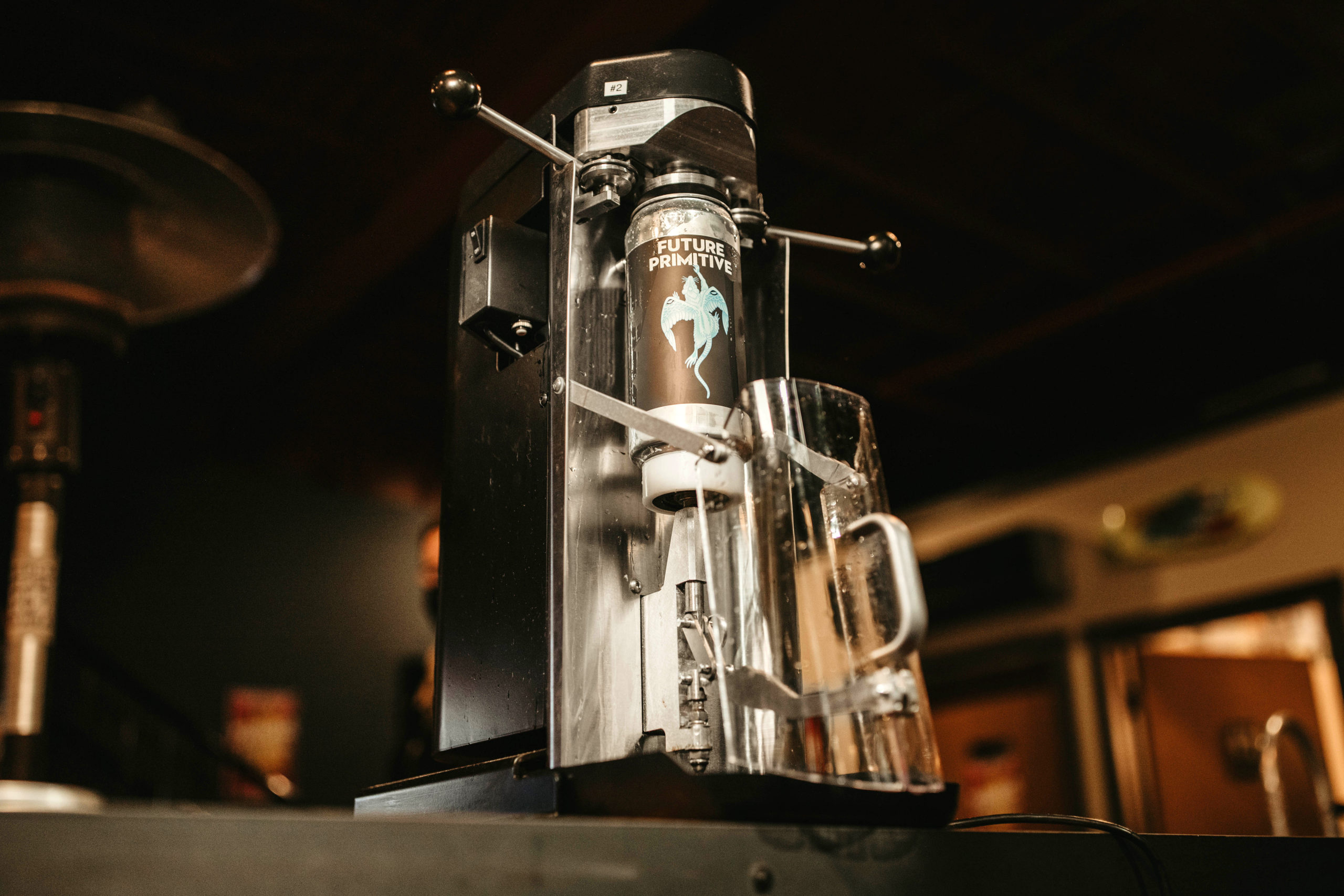
Photography courtesy of Oktober Can Seamers
Grand Rapids-based Oktober Can Seamers produces a line of compact, sturdy, and easy-to-use, individual can seamer machines capable of sealing cans of all sizes from 8oz up to 32oz. Expertly designed by a team with over 10 years of experience constructing precision machines for the aerospace industry, Oktober Can Seamers’ Model 7 Crowler™ Can Seamer will often seal over 100,000 cans with little maintenance — meaning it’s powerful too.
It’s this small, but mighty crowler machine that has been a spinning story of success for breweries across the country during a global pandemic.
From Aerospace to Brewing Space: The History of Oktober Can Seamers
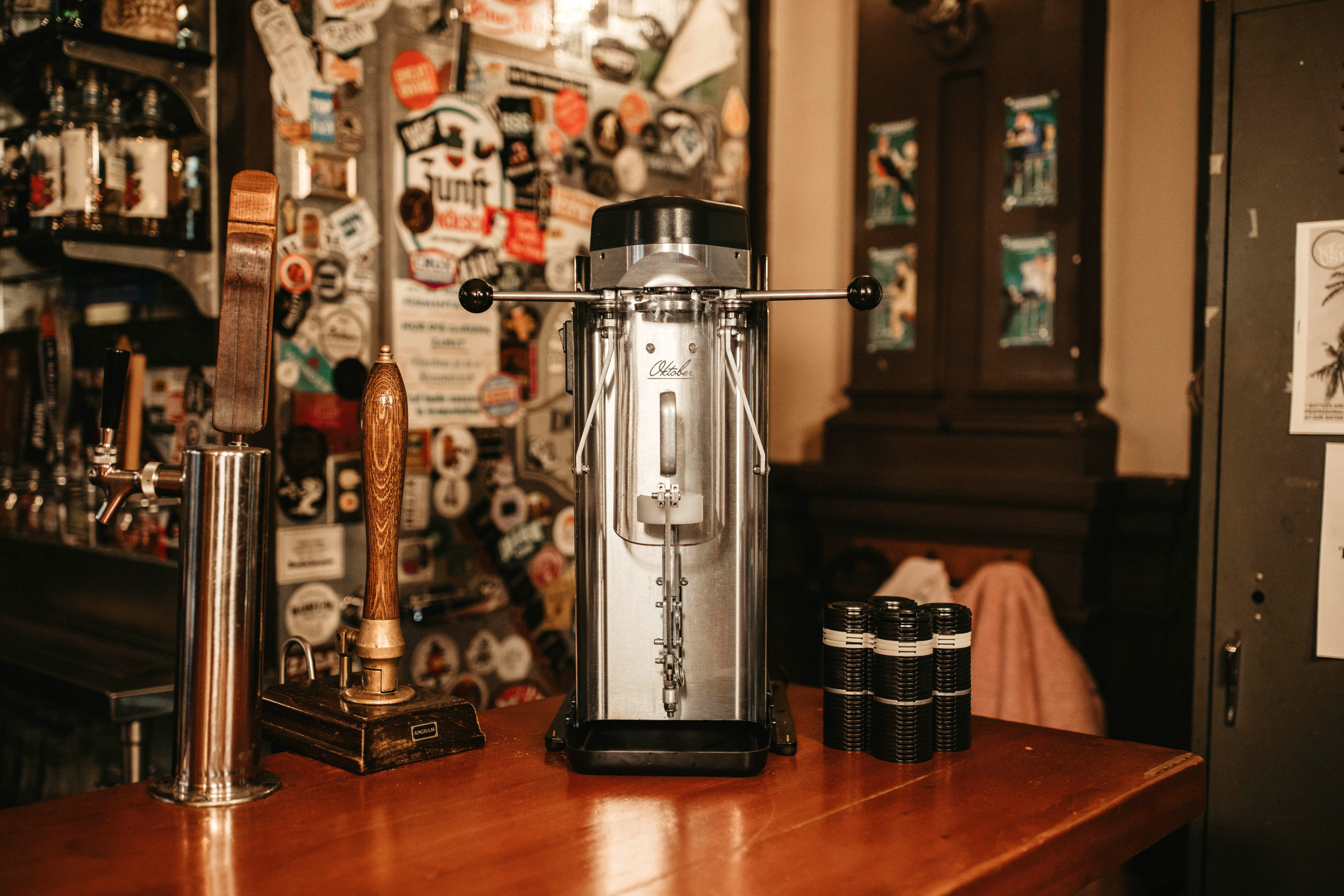
Before the words pandemic, pivot, and COVID-19 ever became a part of our lexicon, Oktober Can Seamers actually started as most breweries do – with a lofty idea and a dream. Back in 2014 Dennis Grumm, now CEO of Oktober Can Seamers, had been designing precision machinery for the aerospace industry while homebrewing on the side. He’d always known he wanted to strike out and start his own company at some point. He just hadn’t honed in on the right idea.
A while back Grumm had been chatting with his brother-in-law about how much easier it would be to can his homebrew instead of bottling. He wrote the idea down for an easy-to-use and affordable can seaming machine in his phone.
When Grumm started exploring ideas for building his own business he scrolled through his phone and came across an old idea. “There wasn’t any product out there like it…and it fit my interests and my engineering background,” says Grumm.
As a kid, Grumm often tore things apart and put them back together, but it wasn’t until high school that he started looking at engineering as an actual career path eventually earning his degree in Mechanical Engineering from Michigan Technological University.
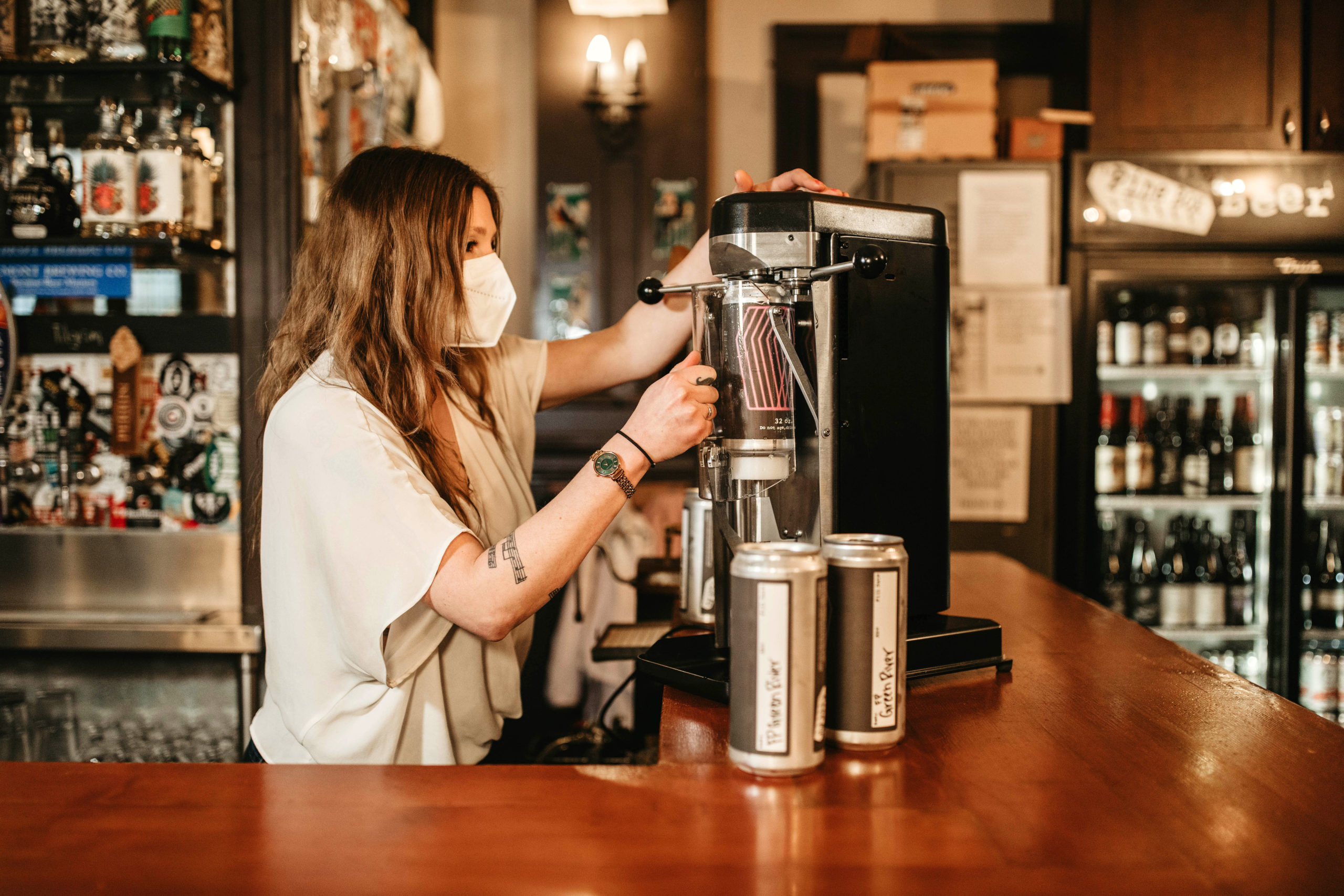
After graduating, Grumm worked for a small company called Campbell Grinder Company designing super-precise tools for the aerospace industry. His main responsibilities included the design and development of CNC grinding machines that created exceptionally precise complex surfaces under extreme conditions.
Using his experience on the job, Grumm applied his methods to building a can seamer. Starting from scratch, he slowly built and tested prototypes for a unit in his spare time. Using 3D modeling software and element analysis he began putting together a machine that used the absolute minimum number of parts and pieces, making it as simple, inexpensive, and user-friendly as possible.
“There were all kinds of aspects of precision machine design that I got to learn on the job and got to perfect,” says Grumm in a video on Oktober Can Seamers’ website. “It gave me a big respect for using numbers and engineering to design a piece of equipment. Even though our can seamers are really simple looking there is a lot of thought that goes into the tolerances in the designs and the amount of overhang and size and shape of the parts and pieces.”
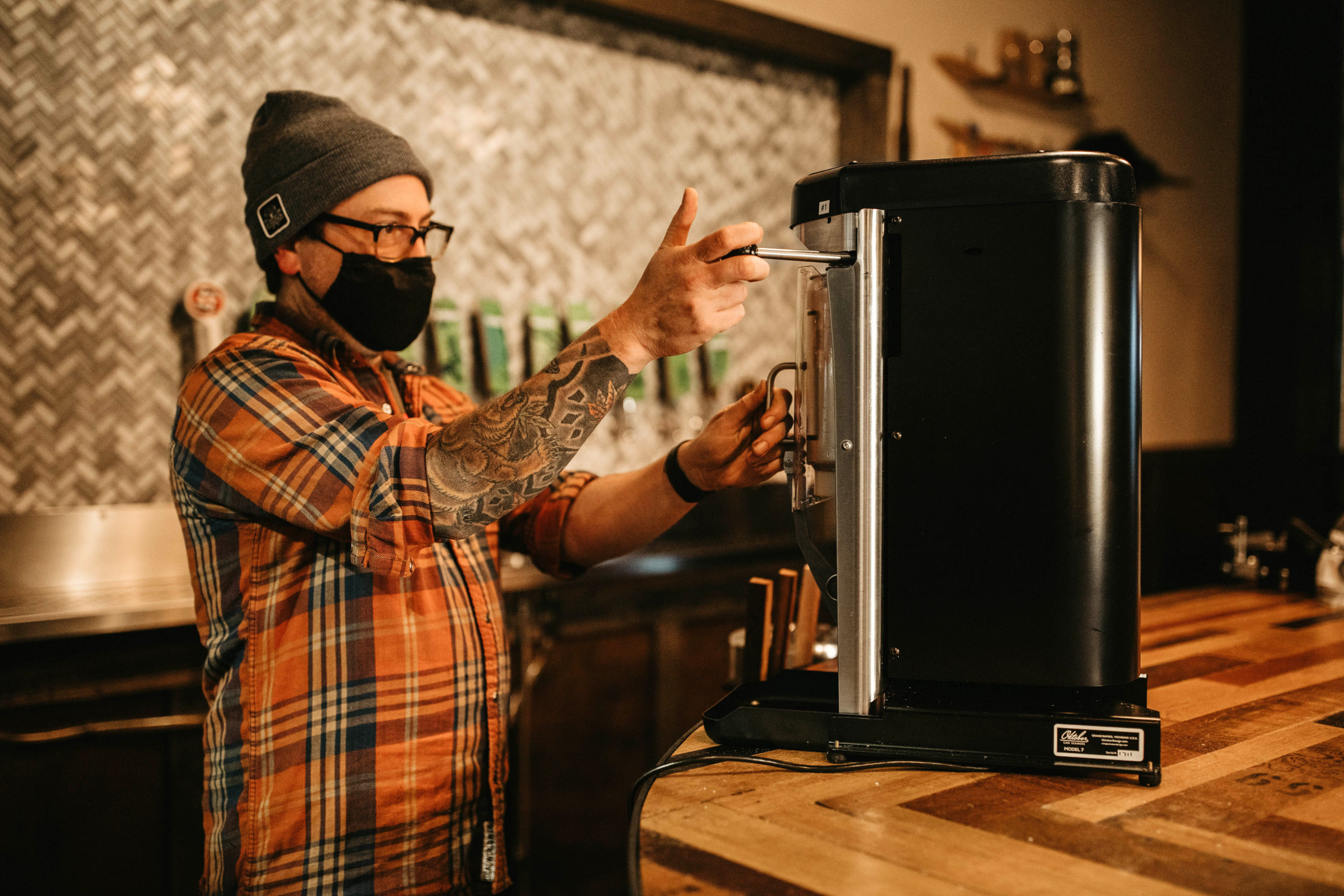
Configured to seam aluminum beverage cans, the Oktober Model 7 Crowler™ Can Seamer is a manual powered machine with a quarter horsepower motor that spins the can while sealing it. The can is clamped into place one at a time and then the lid is rolled around the edge and ironed flat as it’s crimped together.
Although Grumm initially designed the can seamer just for homebrewing applications, after creating a functioning prototype, Grumm and his friends wanted to, “put it through its paces.” They partnered with Grand Armory Brewing Co. in Grand Haven, MI for a short canning run. The machine worked beautifully, selling a bunch of cans over the Fourth of July weekend. Grumm knew he had a successful concept. And, after making a couple tweaks to the original model, upgrading the apparatus to accommodate 16 oz cans instead of 12 oz cans and forming a business plan, he sent the very first production model to Grand Armory. Then, “it was off to the races.” says Grumm.
Building machines in a basement by himself with the help of a few friends eventually grew to constructing can seamers in an 8,000-10,000 sq ft warehouse with 15 to 20 employees. Over the past five years, Grumm says it has been a smooth growth, “We didn’t sell one million seamers the very first day. We sold one a week, then two a week, then five a week, then five or six a day.”
Grumm’s original scribble in a phone had become an actual, slow-growing business.
And then, COVID hit.
A Global Pandemic, A Smart Solution
In March 2020 COVID-19 smacked the United States economy in the face. Taprooms and breweries across the country shut their doors as the nation went into lockdown. Breweries scrambled to find new solutions to continue to generate revenue with their taproom doors closed and keg and draft sales coming to a standstill overnight.
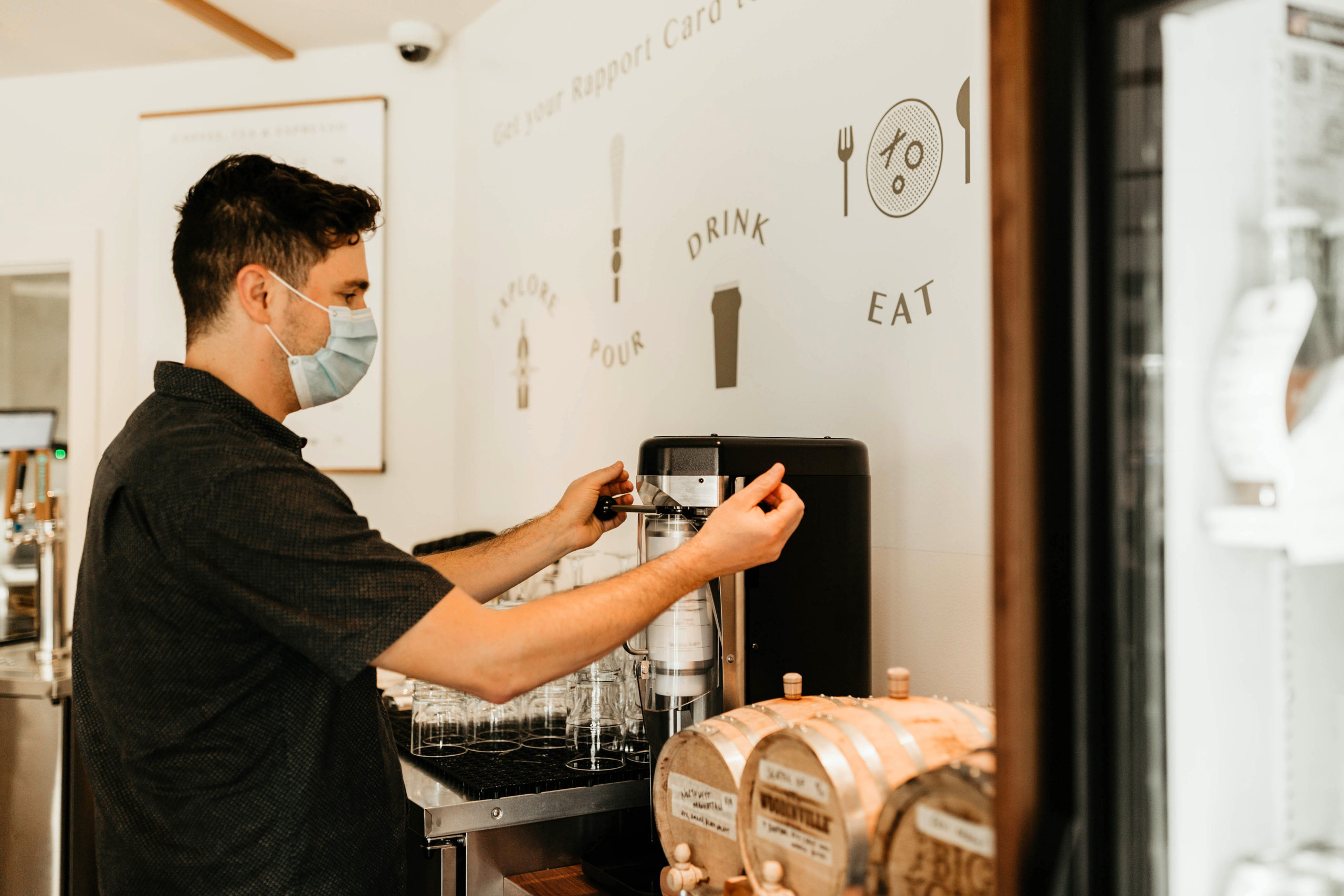
Photography courtesy of Oktober Can Seamers
As breweries explored new options to keep the lights on, Oktober Can Seamers began to receive a bunch of calls.
“March 15th last year was a normal sales day for us,” says Grumm. “But by March 16th our sales jumped to 10 times our normal [rate]. It was crazy.”
Why?
Because Oktober’s can seamers are designed to allow breweries to get their beer into the hands of consumers as quickly as possible.
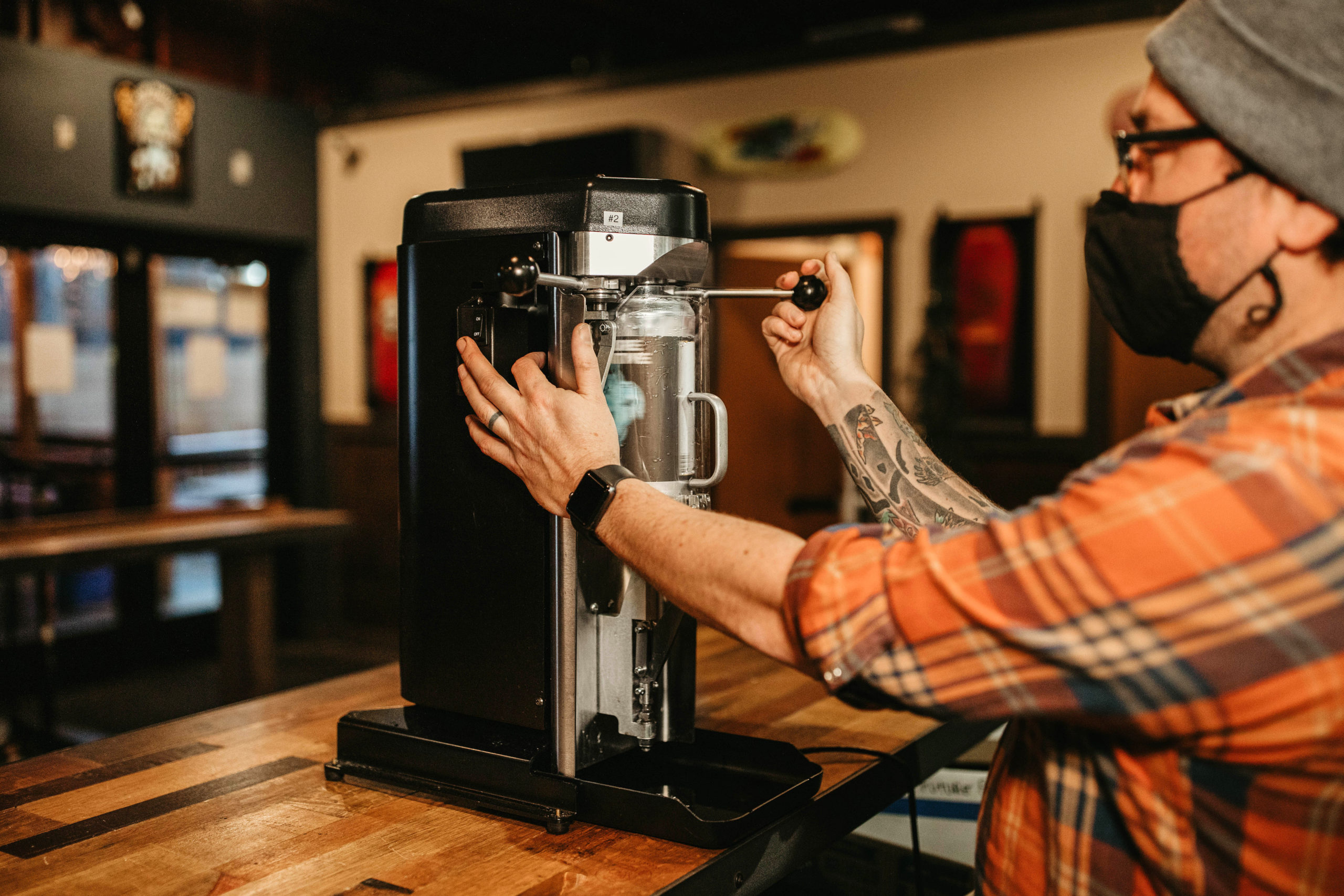
“They’re super reliable,” says Grumm. “We designed [the can seamer] from scratch to be used behind the bar or in a light production environment. It’s super industrial and robust and requires minimum maintenance.”
Meaning during a time of crisis when brewery owners were looking for a model of stability and production, Oktober’s concept hit all the right notes.
Right off the bat the Model 7 Crowler™ Can Seamer provided an alternative solution for breweries now looking to can beers across the spectrum whether for to-go crowler sales out of its taproom or even for light production canning runs from breweries that hadn’t previously packaged.
A Case Study: How 3 Breweries Use Oktober Can Seamers
Obec Brewing
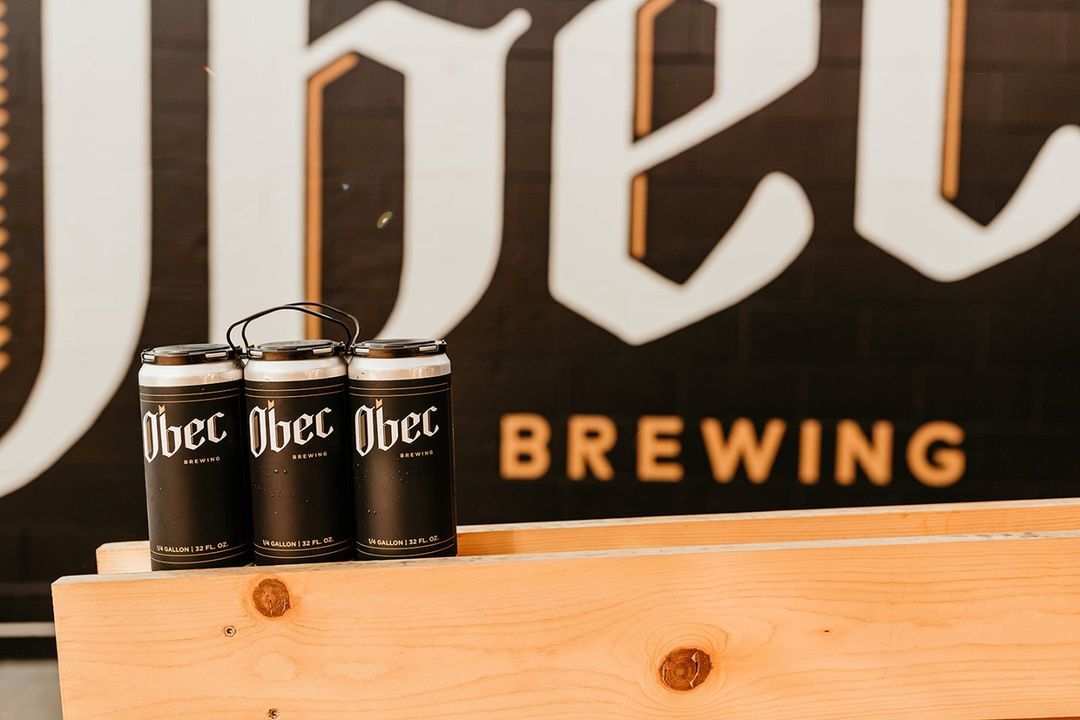
Photography courtesy of Oktober Can Seamers
Breweries like Obec Brewing in Seattle, WA that had relied completely on draft sales from their taproom before the pandemic. Wayne Jehlik, co-founder of Obec (pronounced obetz), and his wife had seen the writing on the wall last St. Patrick’s Day leading up to the citywide shutdown. Going into immediate game-planning mode the couple started shifting to packaging. First, they contacted Craft Canning, a mobile packaging provider in the area, to sign up for a canning run. Second, they purchased an Oktober can seamer for the taproom so they could start canning their draft beer and selling it to-go. With only growlers available for purchase at the time Jehlik knew he would need another solution. After the shutdown, “the community came out in force [to support] by just buying growlers from everyone, but after a week or two everyone tired of having 64 oz growlers. I knew I had to get the can seamer,” says Jehlik.
The impact was immediate. “[The can seamer] allowed us more flexibility for people to get our beer outside of our space without a big glass jar,” says Jehlik, who notes that packaged product now makes up 20 to 30 percent of Obec’s sales on a given day while its total sales of cans and crowlers grew 200 percent in 2020 compared to 2019 (athough it should be noted that Obec only sold growlers in 2019).
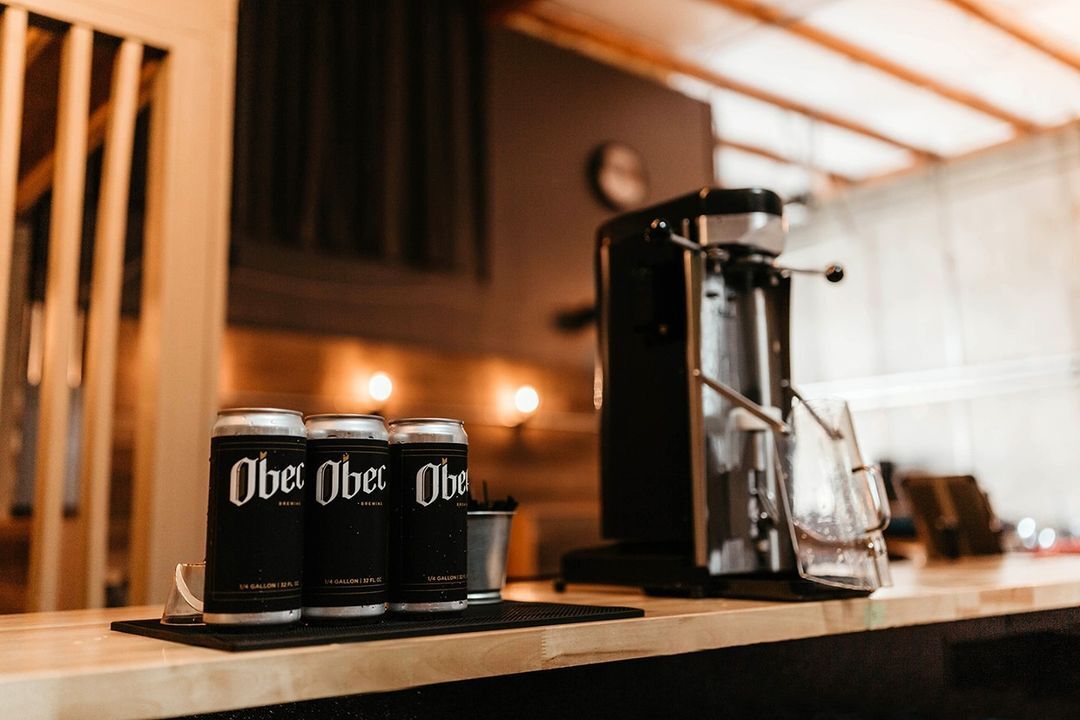
Photography courtesy of Oktober Can Seamers
Beyond the sales, Jehlik says it’s Oktober’s unique concept that has fit well in his space. “It’s quiet, really quick, and easy-to-use…enough to just plop on a bar without taking up a lot of space and as long as it’s close to an outlet I’m good to go.”
It’s exactly what Grumm had in mind once he first saw the success of his machine behind the bar at Grand Armory. “With our [model] you just have to plug and play,” says Grumm.
Founders Brewing
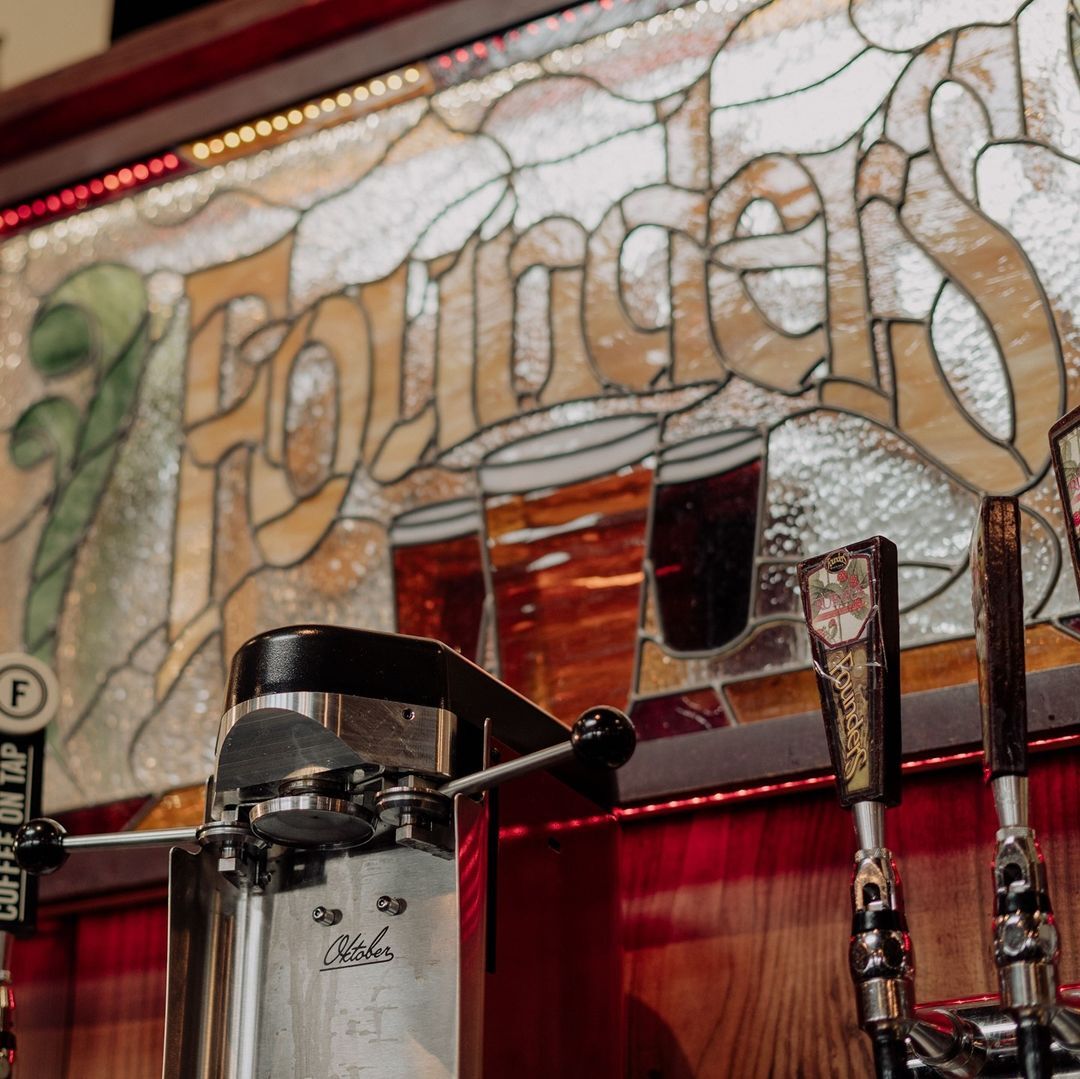
Photography courtesy of Oktober Can Seamers
It’s that ease of use and canning quickness that also drew Mel Rusche, Taproom General Manager at Founders Brewing, to the idea of buying a can seamer. Actually, the Oktober model had been on Rusche’s radar even before the pandemic. The global crisis just accelerated everything.
On Friday, March 13th, 2020 Founders closed the doors to all of its taproom locations. In the 13 years Rusche has worked for Founders she had never closed the taproom once. “That was a gut punch,” says Rusche. “It was the worst Friday the 13th ever.” Like all breweries, Founders had no idea when they’d be able to reopen their doors so they started making plans, opening up curbside pickup and offering beer to-go. Rusche saw the opportunity to officially pull the trigger on purchasing an Oktober can seamer for the taproom to make sure the Founders customers could continue to purchase beer.
One of the tenets of Founders’ business has always been the sale of their taproom-only beers. While much of Founders’ well-known products such as the uber-popular Founders All Day IPA are available for distribution across the country, the brewery’s taprooms also offer a variety of special beers available only on draft at their Grand Rapids and Detroit locations. Buying a Model 7 Crowler™ Can Seamer meant Rusche could continue to deliver these taproom specials to-go.
Plus, Rusche understood the long-term implications of the application. At its peak pre-COVID, the Founders’ Grand Rapids taproom ran at a 700 person capacity. Speed for the management team and servers has always been key, especially when preparing beer to go for consumers. And, while growlers have always been an option for people to take home draft-only beers they enjoyed on-site, the clunky glass jugs are time-consuming to fill, produce a lot of foam and waste, and can be a huge 64oz commitment for someone to buy.
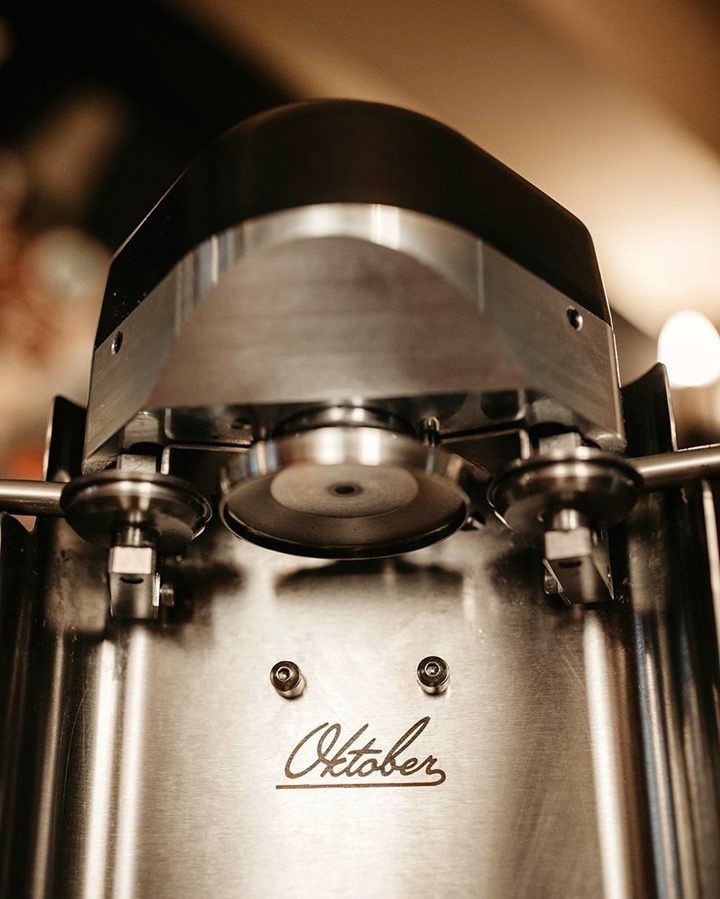
Photography courtesy of Oktober Can Seamers
A crowler on the other hand? Well, Rusche compares it to simply filling up a cup. It’s just a giant opening you fill with beer, throw a cap on, and put into the machines to seal. “You can probably fill four crowlers in the time it takes to fill a growler,” says Rusche, who calls the Oktober can seamer a “gamechanger’ for her servers. It’s why she and the team, “immediately fell in love with it.”
In January 2021 alone Founders sold 700 crowlers from their curbside operation. And, since the taprooms reopened their doors for on-site consumption to the public on February 1st, 2021, the brewery’s crowler sales have increased 22 to 25 percent. Additionally, Rusche notes that 80 percent of those crowler sales have come from those draft-only specials, reinforcing the importance the Oktober Machine has had on Founders bottom line and business model.
“For the cost of the machine the turnaround on that purchase is extremely fast for revenue. It doesn’t take long for that little puppy to pay itself off,” says Rusche.
At Founders the machines have been so successful and well-received by Rusche and her entire management team that she just ordered another one.
Speciation Artisan Ales
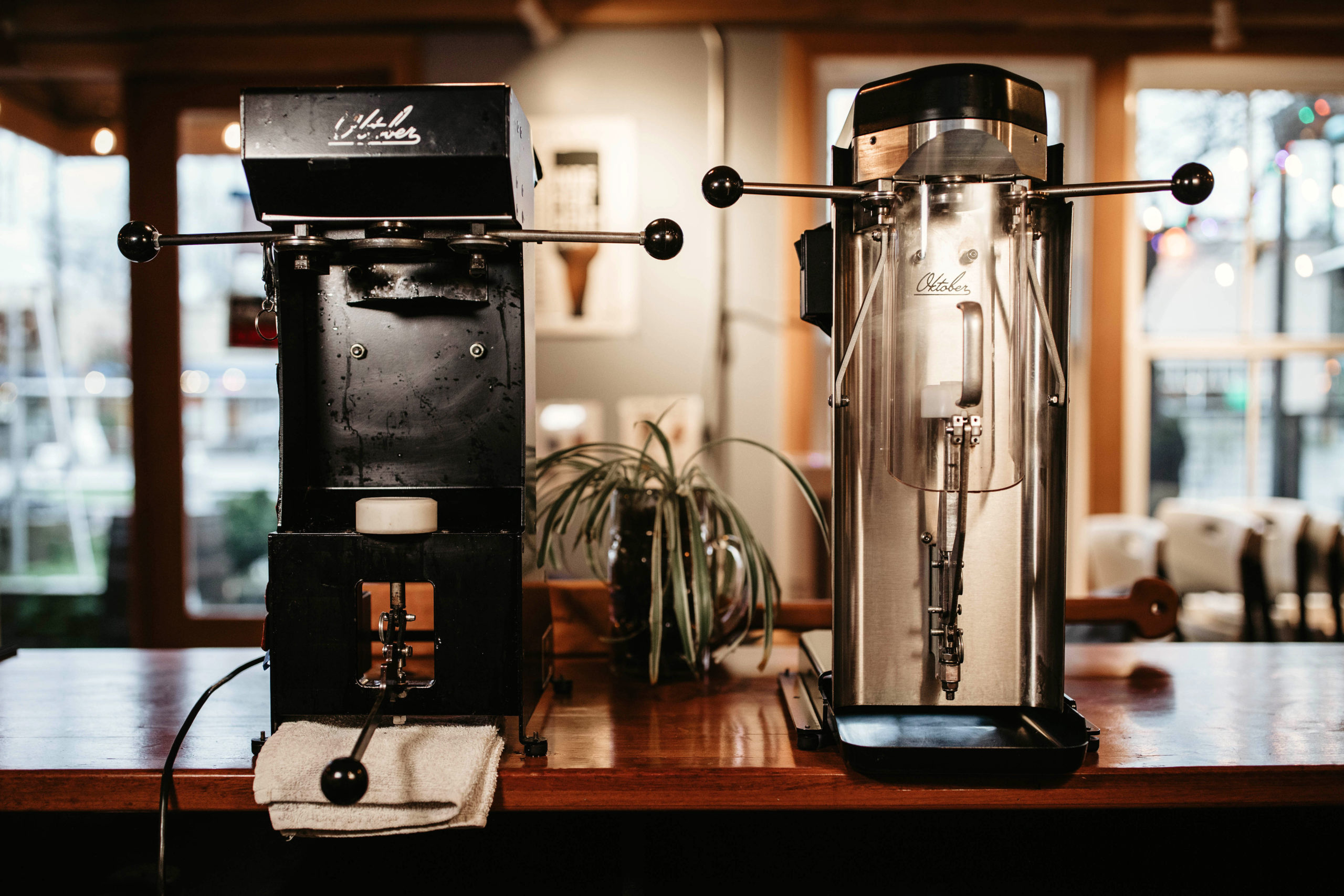
At Speciation Artisan Ales in Grand Rapids, MI they’re also rocking two Oktober can seamers. And while Mitch Ermatinger, owner of Speciation Artisan Ales, purchased his second machine for to-go sales after the pandemic forced him to close his taproom he’s actually been an Oktober Can Seamers customer for a couple of years; he initially bought a machine for light production.
A solely mixed-fermentation brewery, Speciation has a very unique model. Prior to COVID-19 the brewery had been releasing one to two beers a month in 750ml bottles often needing to dictate its schedule based on the natural fermentation of its lambics, saisons, and sours. Gradually diversifying its options, Speciation started experimenting with 19.2oz stovepipe cans in 2018 and later small runs of 16oz cans on one of Oktober’s first can seamer models.
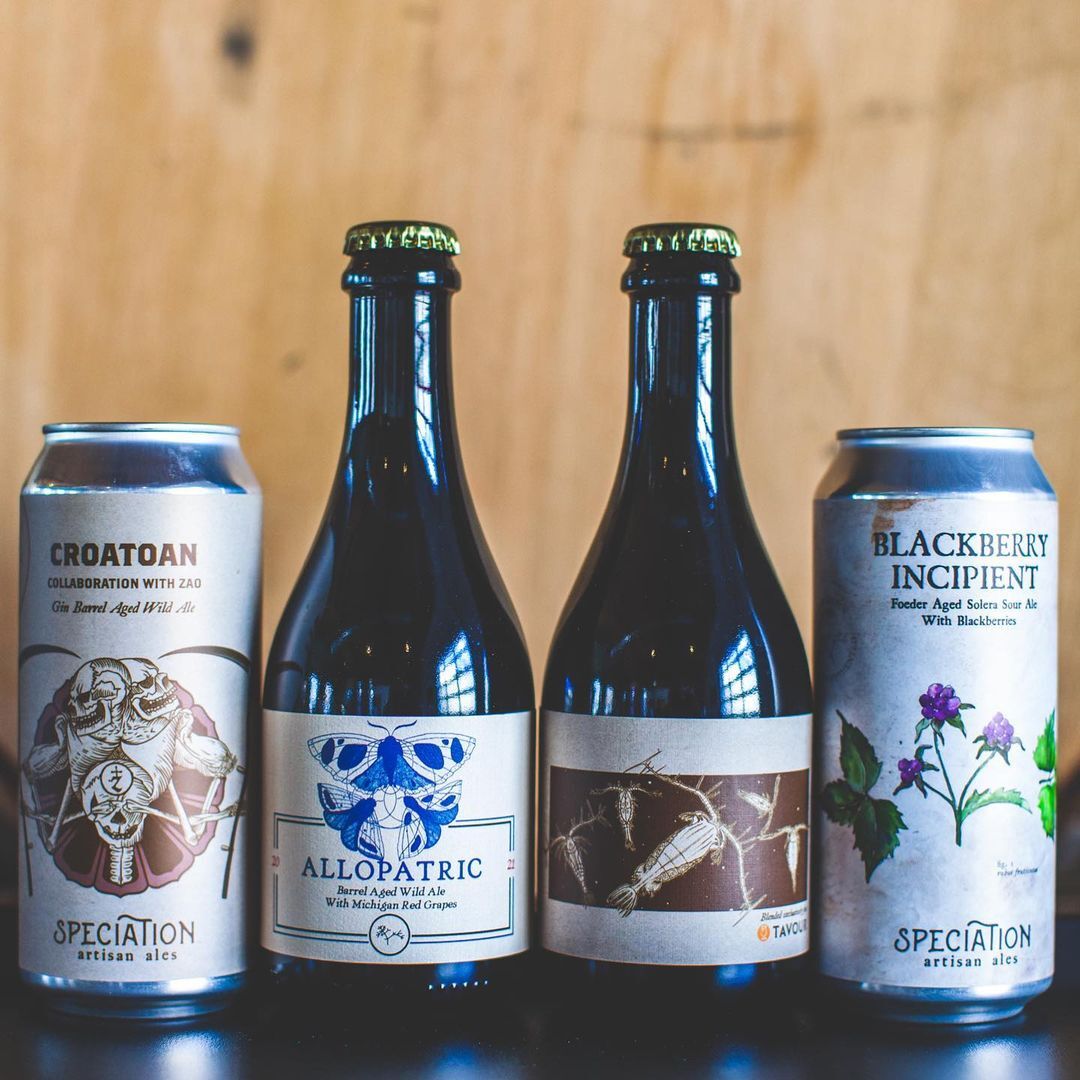
Photography courtesy of Speciation Artisan Ales
“We differed from how everyone was using the machine at that point,” says Ermatinger. “Most breweries used them in taprooms at the point of sale as crowler machines essentially, but we wanted to use it as a production can seamer. We started filling our cans flat and dosing the beer with sugar, so they could carbonate inside the can.” Despite the unique request, the Oktober Can Seamers team immediately adapted to Ermatinger’s needs. “I don’t think they talked to anyone else using cans that way, but they immediately walked me through all steps. I’m still using that same original unit,” says Ermatinger.
In fact, Ermatinger estimates that over the last few years he’s seamed 50,000-70,000 cans (about 3,000 plus per month) on that original machine with very little maintenance.
He loved the reliability and function of the unit so much that when the pandemic hit Ermatinger purchased a second machine to help out with to-go sales in the taproom. Again, Speciation did things a little differently, using the machine to seam 8oz cans (instead of the more traditional 12oz, 16oz, or 32oz) that consumers could take home essentially as beer flights.
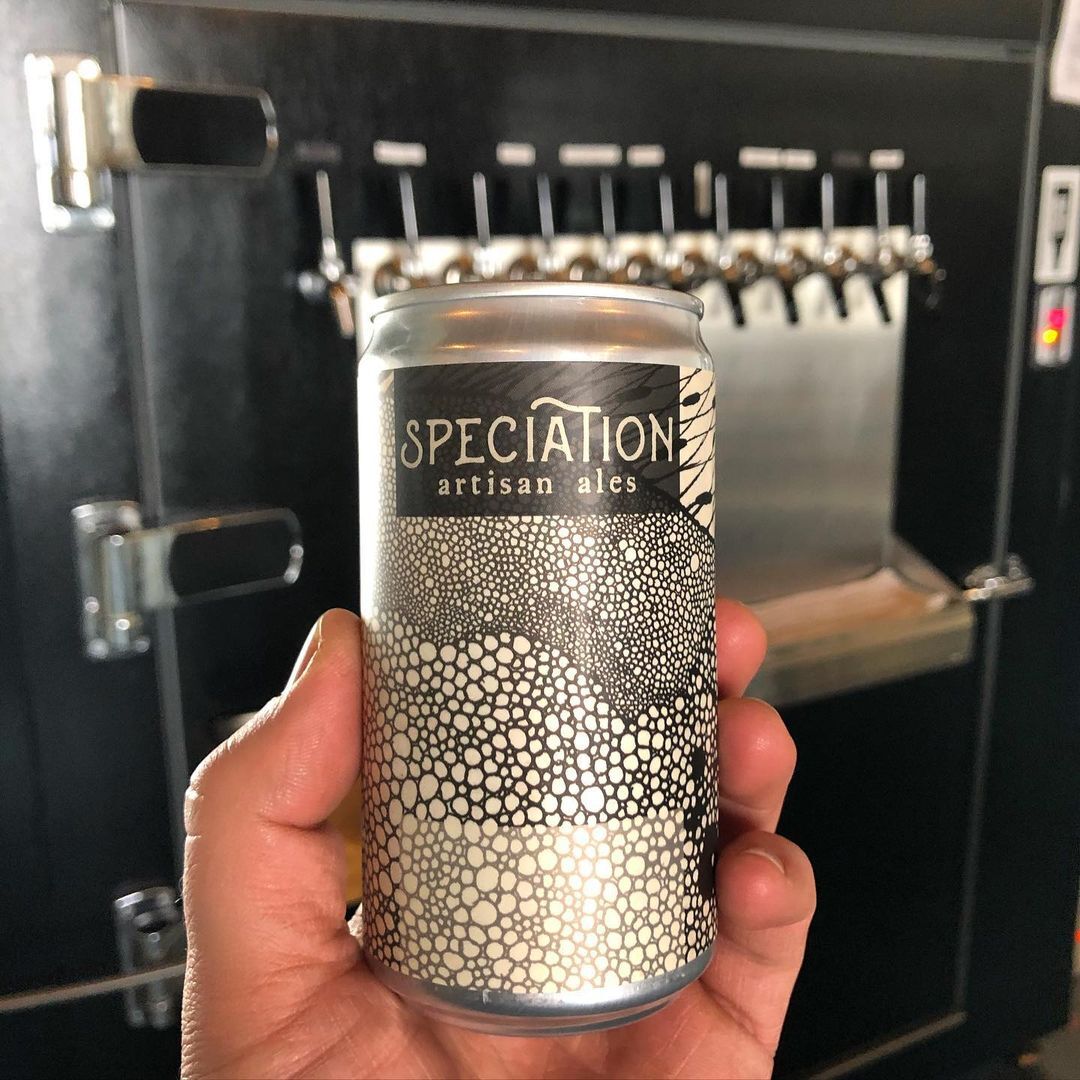
Photography courtesy of Speciation Artisan Ales
Being a mixed fermentation brewery often specializing in sour beers means that Ermatinger’s carefully crafted, complex flavors can often be intense on consumers’ palettes. Ermatinger feels an 8oz can size gives out the perfect amount of his liquid. Additionally, because Speciation’s beers require more time, care, and attention, the price of his beers tend to run on the higher side. Oktober’s crowler machine lets Ermatinger’s customers try his beer at the perfect size and price.
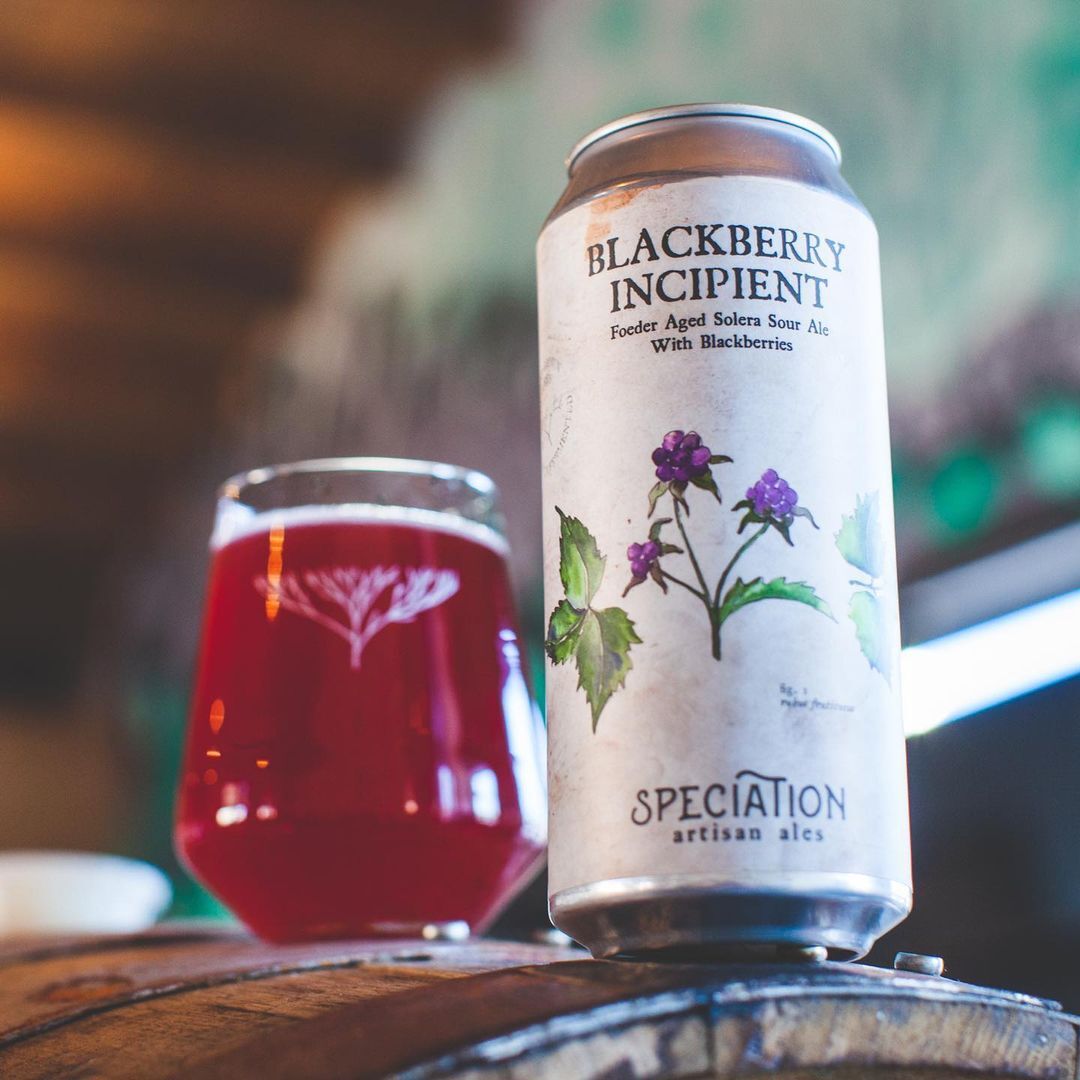
Photography courtesy of Speciation Artisan Ales
Take for example the brewery’s extremely popular The Laurentian Series, a round of spontaneously fermented beers that are left to cool by each of the Great Lakes, picking up nuanced yeasts and flavors from each of these watersheds. On the shelf this elite series can run up to $32 for a 750ml bottle, but on draft someone can nab an 8oz crowler for $10, “so they can still experience the beer without having to pay a premium of the bottle,” says Ermatinger.
While each of these three breweries used the Oktober can seamer in slightly different ways one thing remained the same.
No matter the size of brewery, location, or method of use the Oktober can seamer provided a custom, unique solution for breweries reeling from a global pandemic.
Spinning Towards 10,000 Oktober Can Seamers and Beyond
Behind-the-scenes when COVID-19 hit and more and more breweries reached out inquiring about buying a can seamer, the team at Oktober went into overdrive. To ensure that machines reached the marketplace, people actually worked from home building assemblies in order to not only stay safe, but also to make sure that orders stayed fulfilled.
The work paid off; Oktober doubled its revenue in 2020 according to Grumm.
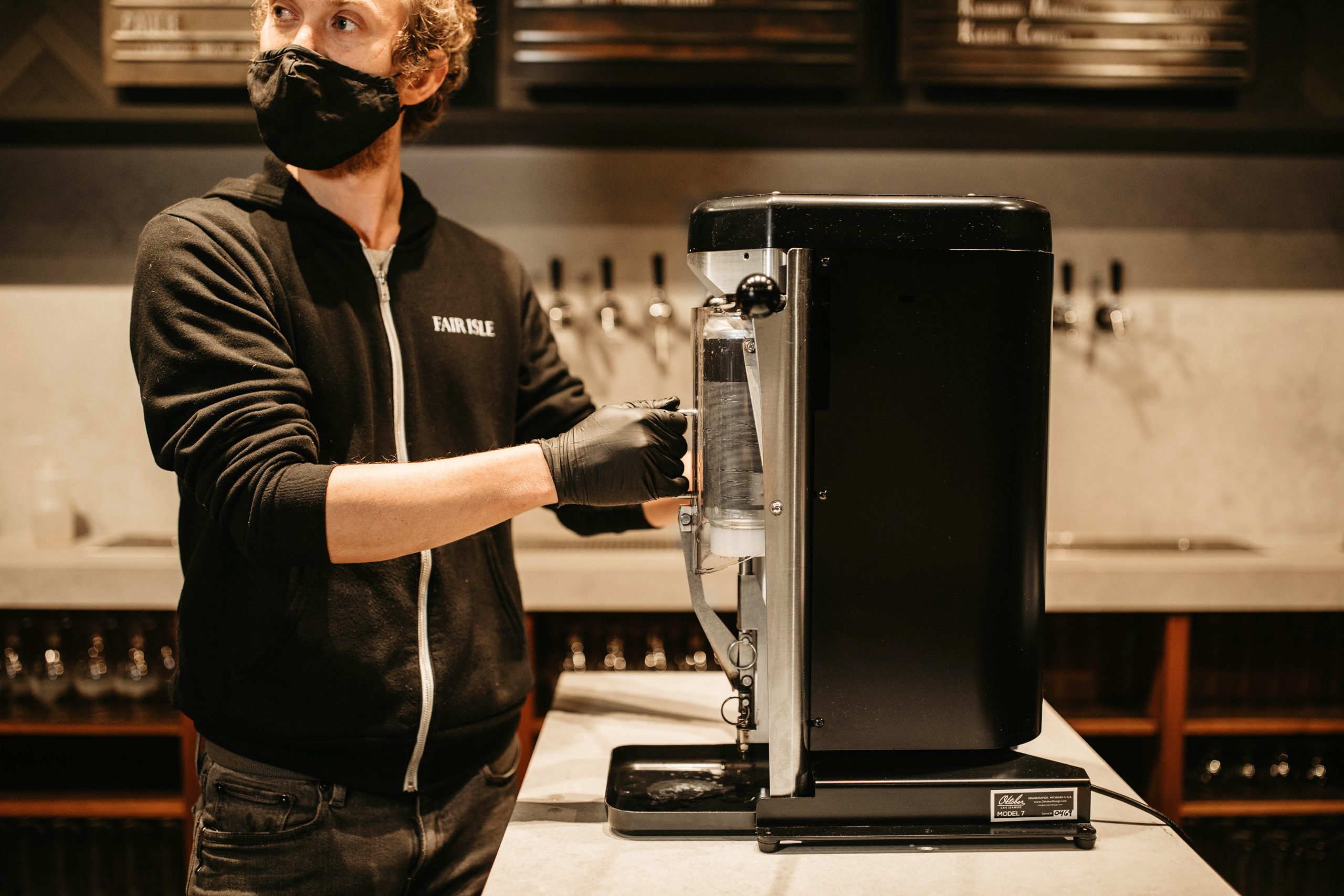
But, talk to Grumm and his team for even a small amount of time and it’s obvious that the success stories they’ve heard from the community, the path they provided for breweries to continue operating, has been the most rewarding part of last year.
Effusive emails, messages, and thankful reviews have flooded in on the website oftentimes noting that 100 percent of a brewery’s beer sales that month went through an Oktober can seamer.
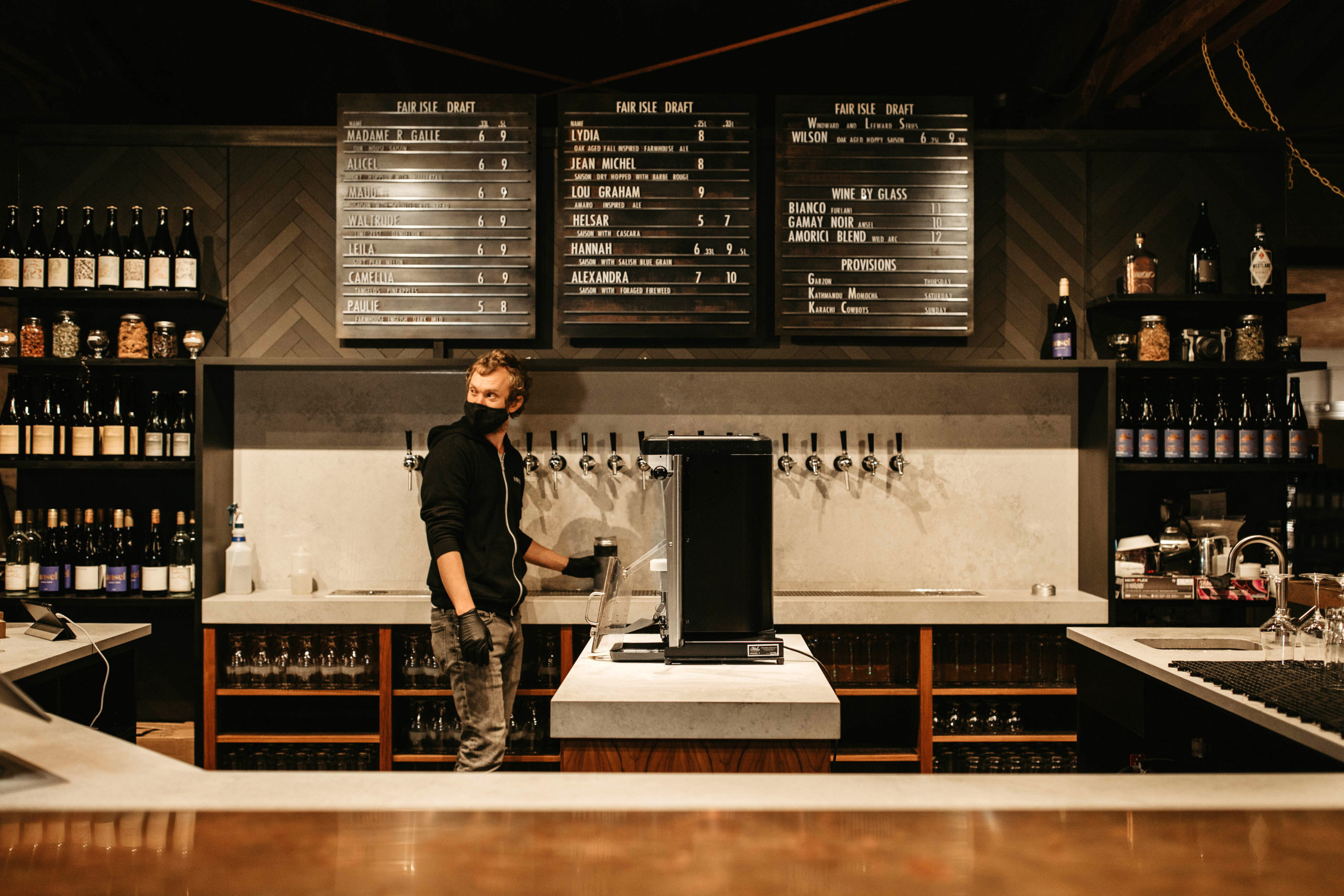
As Oktober nears its 10,000th can seamer sold, the company shows no sign of slowing down. Grumm says plans for the future include getting more cans out into the market and adding more warehouse locations across the country so he can ship cans and machines to breweries faster and more efficiently.
“The overall story from last year has been pretty crazy. It was an unexpected silver lining to be in a position to help all these breweries,” says Grumm. “It’s something we didn’t expect to happen, but when it happened the whole crew and everyone working on building machines and shipping them was very happy to be working and helping businesses. Everyone here is a beer and brewery fan so that was an extra cool experience I’m sure none of us will forget.”
This is a paid, sponsored post presented by Oktober Can Seamers.
Liked this article? Sign up for our newsletter to get the best craft beer writing on the web delivered straight to your inbox.

